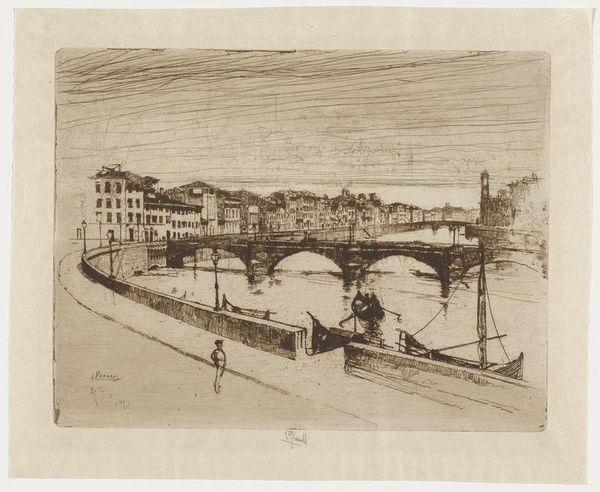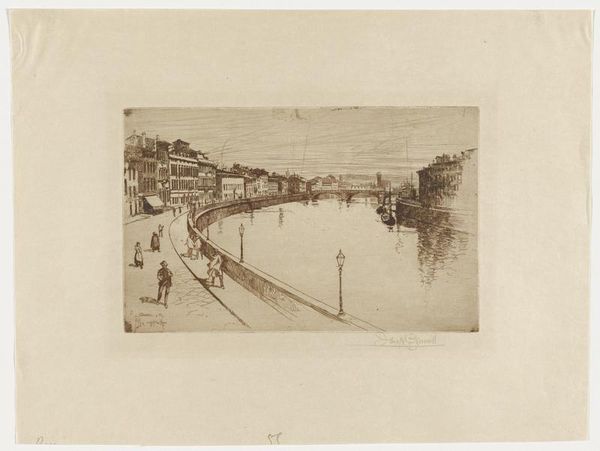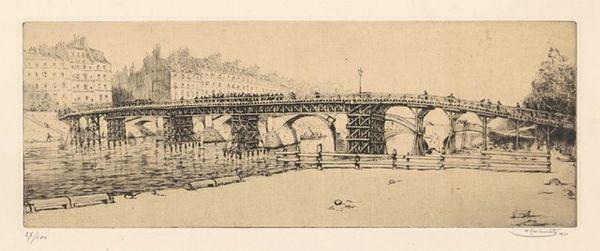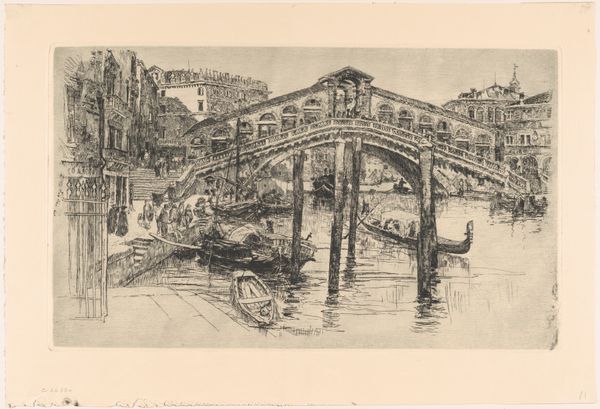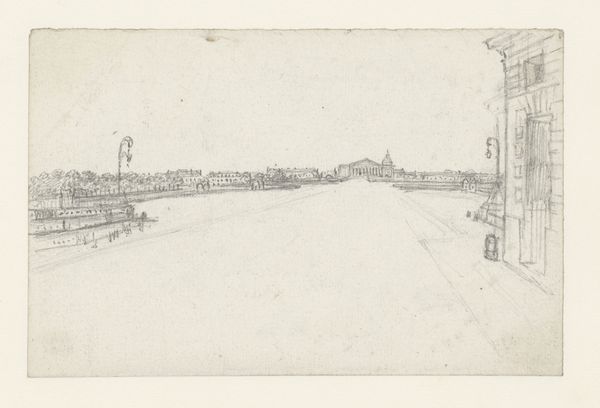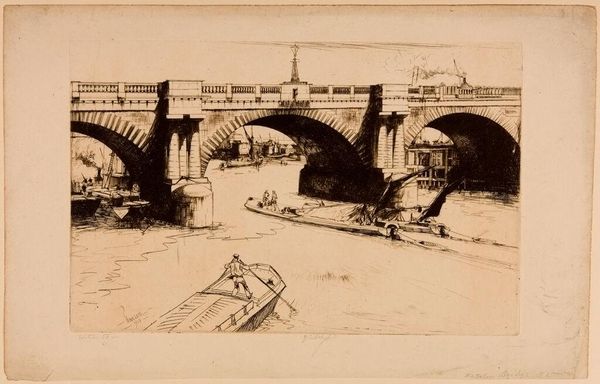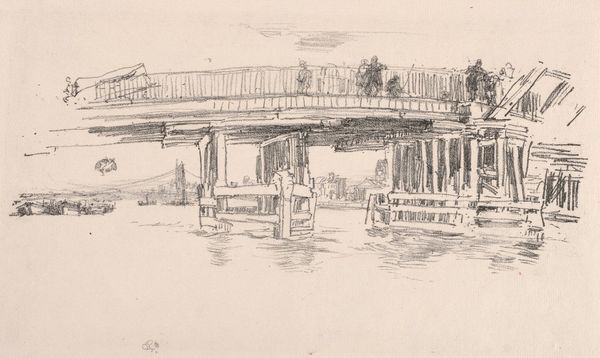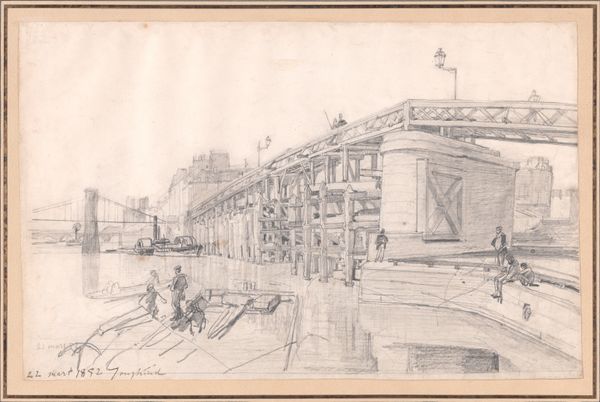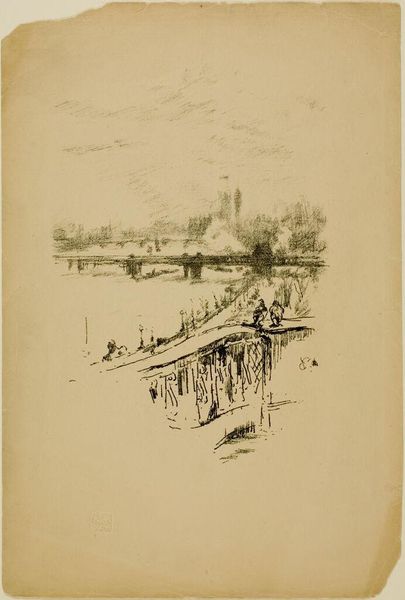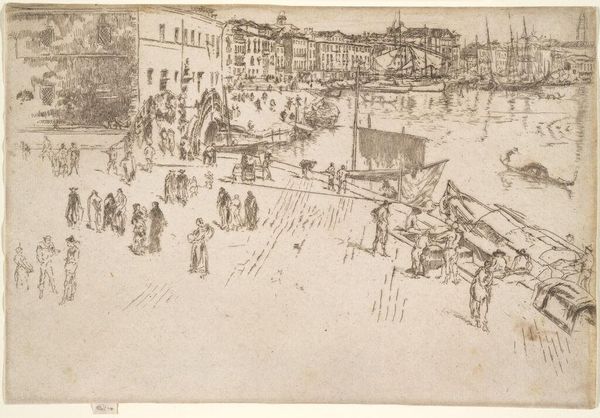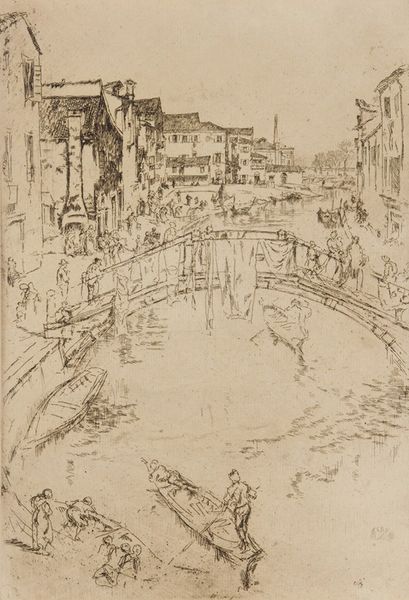
drawing, print, etching, paper
#
drawing
# print
#
etching
#
landscape
#
etching
#
paper
#
cityscape
#
italian-renaissance
Dimensions: 8 1/2 x 11 1/8 in. (21.59 x 28.26 cm) (plate)11 3/8 x 13 3/16 in. (28.89 x 33.5 cm) (sheet)
Copyright: No Copyright - United States
Curator: Joseph Pennell's 1883 etching, "The Arno at Pisa," presents a familiar Italian cityscape. It's rendered on paper, focusing on the flow of the river and the architecture lining its banks. Editor: Immediately, I’m struck by the melancholic air of the piece. The tones are muted, almost sepia-like, creating a sense of faded memory, like a half-remembered dream of Italy. Curator: As an etching, the piece necessitated careful preparation of a metal plate, layering acid-resistant ground, drawing into it, then submersion in acid. The result is that line work, achieved through the careful application of acid-resistant materials to delineate forms. The act of repeatedly exposing the metal to acid etches the design, creating areas that hold ink to yield an impression on paper. Consider the labour behind each mark. Editor: And what marks they are! The dominant imagery is the river itself. Rivers have, across millennia, signified the passage of time, transition, the boundary between worlds, but also offer connections in space between disparate places. See how Pennell uses the reflective surface to almost mirror the architectural history embedded on the riverbanks. It pulls history into the present moment. Curator: I see how the artist prioritizes a sense of place, but I wonder if you agree the technical craft itself is so fascinating here? Notice the variation in line weight – how intentional the artist had to be when applying his line into the ground on the copperplate. Each stroke captures not just visual information, but the deliberate hand of the printmaker at work. The level of precision speaks volumes to Pennell’s commitment to his chosen medium. Editor: Indeed, it's not just about depicting Pisa; it is about using the cityscape to evoke a deeper, more personal understanding of our relationship to places imbued with memory and historical significance. Look how the figure strolling the Arno is so solitary and lost in their thoughts – like we also may be. Curator: It's intriguing to consider how Pennell's detailed etching contributes to our experience of this iconic location through labor, method and skill. Thank you for emphasizing the imagery, offering a much deeper and thoughtful layer than initially struck my eye. Editor: And thank you for guiding me into a deeper exploration into what goes into making such lasting and powerful images that continue to speak across time.
Comments
No comments
Be the first to comment and join the conversation on the ultimate creative platform.
